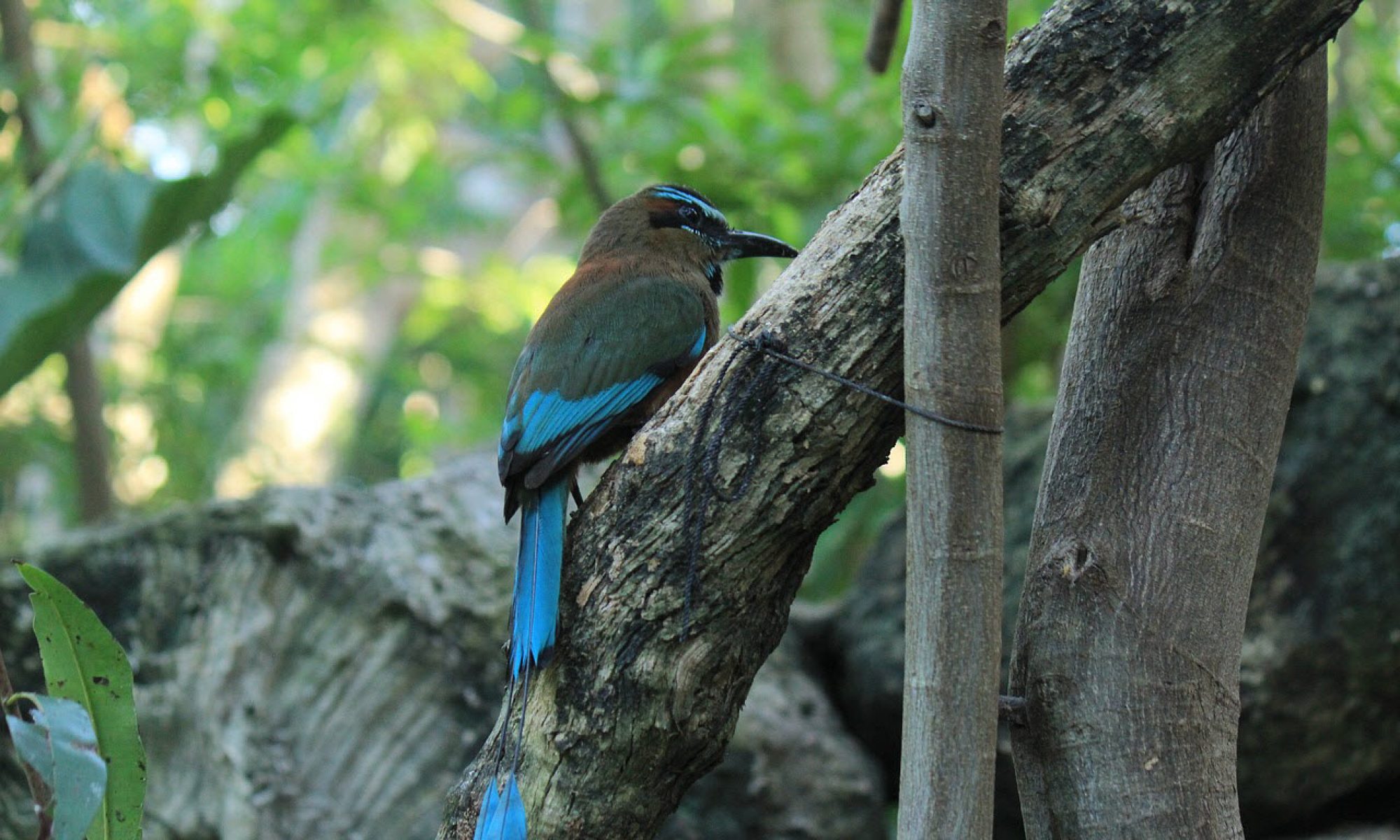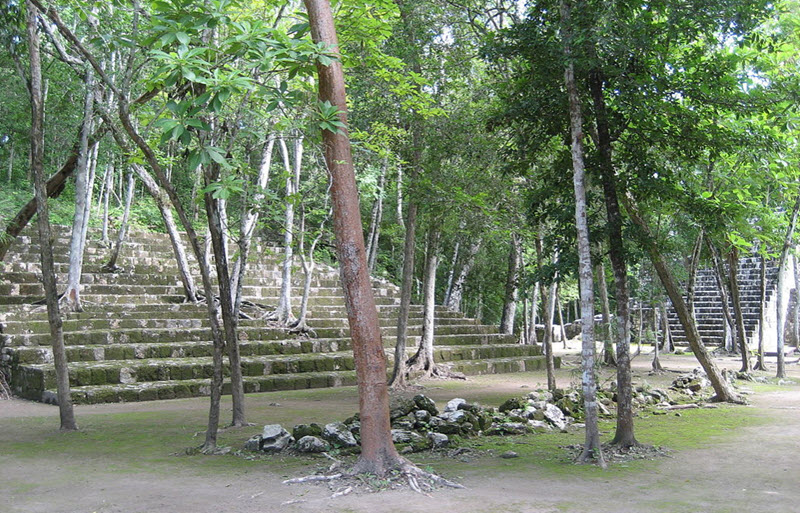Contents
Balamku is a comparatively small Maya archaeological site in the state of Campeche, located roughly 50 km (30 miles) north of the more famous Calakmul ruins.
The Mayas started building Balamku from around the year 300 BC, but the most notable buildings here are from the 300 – 600 AD period. Balamku was built upon a karstic plateau with poor drainage, within a region the archaeologists refer to as the Campeche Petén. To the east and the west, Balamku is bordered by bajos, lands that are flooded during a significant part of the year.
When?
Balamku was occupied from around the year 300 BC, during the Late Pre-Classic period.
The oldest buildings on the site has been dated to the transition period from late Pre-Classic to Early Classic period.
Human occupation of the site continued through the Terminal Classic period, between 800 and 1000 AD.
Getting there
Balamku is located 3 km north of the highway running between Chetumal and Escárcega.
Short facts about Balamku
- The archeological site Balamku covers roughly 25 hectares (62 acres), but a vast majority of all the buildings and artefacts are found within a much smaller area.
- The ruins form four sections: Central, North, South, and Southwest.
- One of the highlights are the elaborate plaster facades created during the Early Classic period.
- Balamku has one of the largest surviving Maya stucco friezes of the whole Maya region. It is an almost intact nearly 17 meters long painted stucco frieze created in the period 550-650 AD. After being fully excavated by archaeologists, it stands 1.75 meters tall, displaying its imagery of rulers and a sacred mountain. Nowadays, a roof has been built above it to protect it from wear.
- The Balamku style is difficult to pinpoint. It looks similar to Petén architecture, but with notable Río Bec influences.
Excavation
The scientific community found out about the ruins in the 1990s, partly due to the work of Mexican archaeologist Florentino García Cruz. Together with custodians from the Instituto Nacional de Antropología e Historia, Cruz was in the area in 1990 to investigate reports of archaeological looting. They encountered a trench dug by looters, and those looters had partly uncovered a painted stucco frieze.
Rescue work commenced promptly, but it would take until 1994-1995 before the site was excavated. This project was carried out by a group headed by Mexican archaeologist Ramón Carrasco. The group consisted of two teams of archaeologists; a Mexican one that focused in the central part of Balamku and a French group that dug more to the south.
The sections (groups)
As mentioned above, the ruins form four different groups at the site: Central, North, South and Southwest. Of these, the Central group and the North group are closer to water sources than the other two. The oldest discovered ruins in Balamku (dated to the transition period from Late Pre-Classic to Early Classic) have been found in the Central and South groups, but this could of course change if excavations are resumed again, since there are still many parts of Balamku that are unexplored by archaeologists.
The Central Group
The Central Group includes three plazas.
- One plaza is found at the southern extreme of the Central Group. It has a Mesoamerican ballcourt and several mounds. The mounds have yet not been excavated by archaeologists.
- One plaza is found in the northwestern part of the Central Group. It is bordered by Structure I on its northern side, by Structure IV to the south, by Structures V to the east, and by Structure VI to the west. Archaeologists have dug test pits here and found remains dated to the Late Pre-Classic period.
- One plaza is near the northwestern plaza, but separated from it by Structure V. To the north, it is bordered by Structure II, while Structure III is situated to the west of this plaza. To the south, the plaza is bordered by several structures that have not be excavated by the archaeologists.
This is the group where a stucco frieze was partly uncovered by looters. This frieze was then fully excavated by archaeologists under the direction of Instituto Nacional de Antropología e Historia.
The North Group
This group has been mapped but not yet excavated by archaeologists. It contains six plazas bordered by structures, and some of these structures are taller than 15 meters.
he South Group
This group contains four plazas:
- One plaza that is enclosed by structures to the north, south and west. The structure on the south side of this plaza has been dated to the Late Pre-Classic era and is one of the oldest known buildings at Balamku.
- One plaza that is enclosed by structures to the north, south and east.
- One plaza that is enclosed by structures to the south and east.
- One plaza that is enclosed by structures to the south, west and east.
At least two burial spots have been excavated here, including one where an elite member of society had been buried.
The Southwest Group
This group consists of two structures that form an astronomical complex.

